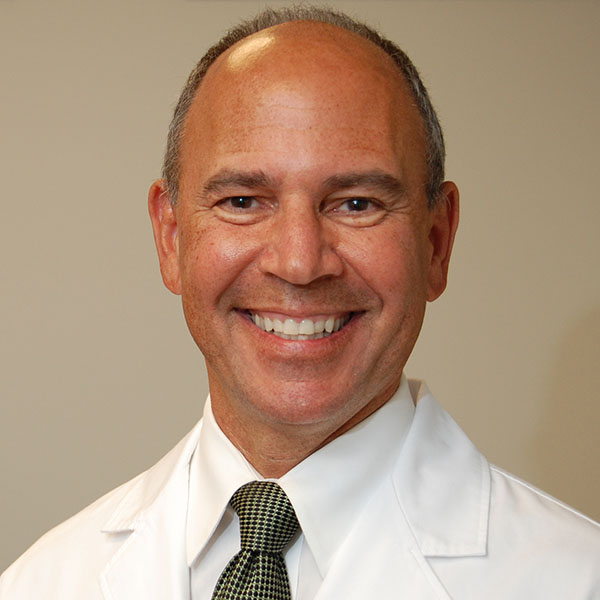
Health care should improve your health, right?

It’s undeniable: modern medicine offers ever-expanding ways to heal and prevent disease. But it’s also true that health care can cause harm. One analysis found that about 6% of health care encounters caused preventable harm, leading to thousands of deaths each year. And it’s not just errors that cause trouble. Highly skilled health care providers can cause harm even when they do everything right.
So, how can you reduce your chances of being harmed? Understanding what you can do to lessen the possibility of harm and what’s beyond your control are good first steps.
Whatever happened to “first do no harm”?
Fortunately, it remains a central tenet of medical care. Yet our health care system is complex and fragmented. Each year new medications are added to an ever-growing list, and people live longer with more chronic medical conditions than happened in the past. So in one sense, the successes of modern medical care may contribute to the high rate of health care–related harm.
These harms are often due to our complicated system of health care rather than one individual’s mistake. Harm due to substandard or negligent care is known as medical malpractice. Both health care providers and health care systems have important roles to play in preventing harm to patients.
Are there harms that cannot be prevented?
An enormous volume of scientific research teaches the best ways to diagnose, treat, and prevent disease. Yet people can react to treatments in completely unpredictable ways.
For example, a common and standard antibiotic treatment (think penicillin) can cause anaphylaxis, a life-threatening allergic reaction. Fortunately this is rare, but unless you or your doctor know to avoid it due to past side effects, there’s always a small chance of a severe reaction.
Often less dramatic — yet also unpreventable — harms are:
- Medication side effects. Every medicine comes with potential side effects, such as nausea, sleepiness, or rash.
- Misdiagnosis. Because no one has perfect diagnostic skills, even the most skillful health care provider can be wrong. This can result in unnecessary or delayed treatment.
- Inaccurate test results. Just as no health care provider is perfect, no test is either. False-positive results (indicating an abnormality when none is present) and false-negative results (normal results when disease is present) are common in medical practice. These results can lead to unnecessary treatment or false reassurance.
Which harms can be prevented?
Preventable harms can be dramatically reduced. They’re often due to mistakes that can be caught and corrected. Frequently, it takes a combination of things to go wrong for harm to occur.
The “Swiss cheese model” is often applied here: imagine you’re a fly trying to travel through several chunks of Swiss cheese. (I know it’s an odd scenario, but stick with me here.) It’s impossible to fly through the cheese unless the holes line up just so.
Frequently in health care, several factors must line up for an error to sneak through — for example, giving a hospitalized patient a medication to which they are allergic. For that to happen, the wrong drug has to get past the prescribing doctor, the computerized ordering system, the hospital pharmacist, the nurse giving the medication, and the patient. That’s a lot of layers, so most often an error like this will be caught.
What can you do to avoid preventable harms?
Where do you fit in? In these three scenarios, here’s what you can do to avoid preventable harms.
The problem: Taking medicines you no longer need or more medicines than necessary.
It might not seem like a big deal to keep taking a medicine if it isn’t causing any problems. But all medicines can cause side effects that you’d do better to avoid if you can safely stop taking it or reduce the dose. Plus, harmful interactions can occur if another medicine is added to your list.
What you can do: Make sure you know why you need to take each of your medicines. Ask the providers who prescribe each medicine if it is still necessary to take it or if the dose can be safely reduced. Reducing a dose may reduce the risk of side effects and the likelihood of a harmful interaction.
The problem: Taking the wrong medicine or the wrong dose.
What you can do: At your doctors’ visits, take notes or bring a friend or family member to help you remember medicine instructions. Ask whether you can record the medication instructions your doctor gives you. Take a photo of the instructions you’re given in case you lose the written version. Double-check details of your medicine list with your pharmacist. And ask questions if you’re unsure about the medicines recommended to you.
The problem: Wrong site surgery.
Despite efforts to make this a “never error,” surgery on the wrong part of the body still happens.
What you can do: Make sure you and your surgeon agree on what part of your body and which side requires surgery. Most surgeons now mark the site with a special pen before surgery and ask you to confirm the site by adding your initials. (The ink doesn’t come off easily with skin cleaners applied prior to surgery).
Some of these tips require time or resources that aren’t available to everyone: you might not be able to bring another person with you to medical visits or have a recording device. But asking questions — and getting answers you understand — should be routine.
Where does malpractice fit in?
When the topic of health care–related harm comes up, malpractice may be the first thing you think about. Yet, the approximately 10,000 malpractice payments made each year in the US likely represent only a small portion of all harm related to health care.
There are several reasons for this, including:
- Even when negligent or substandard care occurs, it doesn’t always cause major or long-lasting harm that leads to a malpractice claim.
- Many people who could file malpractice suits elect not to, or may not even realize that they’ve experienced negligent care. Past studies suggest that less than 5% of people experiencing harm related to medical care file malpractice claims.
- Increasingly, health care providers and health care systems accept responsibility for preventable harm occurring on their watch, and offer compensation rather than waiting for a legal claim to be filed.
The bottom line
It’s an unfortunate reality that some harms due to health care are inevitable. But there are steps you can take to avoid preventable harm and lessen the chances that the person harmed is you.
About the Author

Robert H. Shmerling, MD, Senior Faculty Editor, Harvard Health Publishing; Editorial Advisory Board Member, Harvard Health Publishing
Dr. Robert H. Shmerling is the former clinical chief of the division of rheumatology at Beth Israel Deaconess Medical Center (BIDMC), and is a current member of the corresponding faculty in medicine at Harvard Medical School. … See Full Bio View all posts by Robert H. Shmerling, MD

Shining light on night blindness

Animals renowned for their outstanding night vision include owls, cats, tarsiers (a tiny primate in Southeast Asia) — and even the dung beetle.
But humans? Not so much.
Over time, many people suffer from night blindness, also known as nyctalopia. This condition makes seeing in dim or dark settings difficult because your eyes cannot adjust to changes in brightness or detect light.
What are the dangers for those experiencing night blindness?
Night blindness is especially problematic and dangerous when driving. Your eyes cannot adjust between darkness and the headlights of oncoming vehicles, other cars may appear out of focus, and your depth perception becomes impaired, which makes it difficult to judge distances.
Night blindness also may affect your sight at home by making it hard for your vision to quickly adjust to a dark room after turning off the lights. “This can cause people to bump into furniture or trip and suffer an injury,” says Dr. Isabel Deakins, an optometrist with Harvard-affiliated Massachusetts Eye and Ear.
What happens in the eye to create night blindness?
The ability to see in low-light conditions involves two structures in the eye: the retina and the iris.
The retina, located in the back of the eye, contains two types of light-detecting cells called cones and rods. The cones handle color vision and fine details while the rods manage vision in dim light.
The iris is the colored part of your eye. It contains muscles that widen or narrow the opening of your pupil to adjust how much light can enter your eyes.
If your irises don’t properly react, the pupils can dilate and let in too much light, which causes light sensitivity and makes it hard to see in bright light. Or your pupils may remain too small and not allow in enough light, making it tough to see in low light.
What causes night blindness?
Night blindness is not a disease but a symptom of other conditions. “It’s like having a bruise on your body. Something else causes it,” says Dr. Deakins.
Several conditions can cause night blindness. For instance, medications, such as antidepressants, antihistamines, and antipsychotics, can affect pupil size and how much light enters the eye.
Eye conditions that can cause night blindness include:
- glaucoma, a disease that damages the eye’s optic nerves and blood vessels
- cataracts, cloudy areas in the lens that distort or block the passage of light through the lens
- dry eye syndrome.
However, one issue that raises the risk of night blindness that you can’t control is age. “Our eyes react more slowly to light changes as we age, and vision naturally declines over time,” says Dr. Deakins. “The number of rods in our eyes diminish, pupils get smaller, and the muscles of the irises weaken.”
What helps if you have night blindness?
If you notice any signs of night blindness, avoid driving and get checked by an eye care specialist like an optometrist or ophthalmologist. An eye exam can determine if your eyeglass prescription needs to be updated.
“Often, a prescription change is enough to reduce glare when driving at night," says Dr. Deakins. “You may even need separate glasses with a stronger eye prescription that you wear only when driving at night.”
Adding an anti-reflective coating to your lens may help to cut down on the glare of the headlights of an oncoming car. However, skip the over-the-counter polarized driving glasses sold at many drug stores. "These may help cut down on glare, but they don't address the causes of night blindness," says Dr. Deakins.
An eye exam also will identify glaucoma or cataracts, which can be treated. Glaucoma treatments include eyedrops, laser treatment, or surgery. Cataracts are corrected with surgery to replace the clouded lens with an artificial one. Your eye care specialist can also help identify dry eye and recommend treatment.
Ask your primary care clinician or a pharmacist if any medications that you take may cause night blindness. If so, it may be possible to adjust the dose or switch to another drug.
Three more ways to make night driving safer
You also can take steps to make night driving safer. For example:
- Wash the lenses of your glasses regularly. And take them to an optician to buff out minor scratches.
- Keep both sides of your front and rear car windshields clean so that you can see as clearly as possible.
- Dim your dashboard lights, which cause glare, and use the night setting on your rearview mirror.
About the Author

Matthew Solan, Executive Editor, Harvard Men's Health Watch
Matthew Solan is the executive editor of Harvard Men’s Health Watch. He previously served as executive editor for UCLA Health’s Healthy Years and as a contributor to Duke Medicine’s Health News and Weill Cornell Medical College’s … See Full Bio View all posts by Matthew Solan
About the Reviewer

Howard E. LeWine, MD, Chief Medical Editor, Harvard Health Publishing
Dr. Howard LeWine is a practicing internist at Brigham and Women’s Hospital in Boston, Chief Medical Editor at Harvard Health Publishing, and editor in chief of Harvard Men’s Health Watch. See Full Bio View all posts by Howard E. LeWine, MD